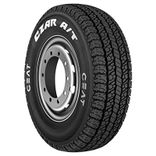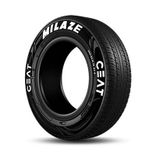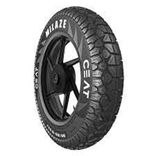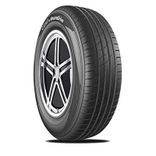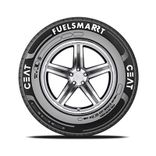Ad
Ad
Difference between Tube and Tubeless Tyres - TyreCafe
Let’s find out the difference between Tube and Tubeless Tyres, and what advantages does the tubeless tyre have to offer to people
We all know how important tyres are for running automobiles smoothly on roads. Traditionally, tyres were made with a provision of an inner tube that was filled with air to provide a soft cushioning that made vehicles running smoothly. This tube was placed inside the tyre and then air was filled through a nozzle having a valve. However, in case of a nail or any other sharp object piercing through tyre and tube caused loss of air and punctured the tube. This tube then had to be repaired or replaced tyre manufacturers came up with a novel idea of a tubeless tyre to solve this problem. Today we will know the Difference between Tube and Tubeless Tyres.
Ad
Ad

Off late there has been a surge in demand for tubeless tyres. Both the two-wheelers as well as four-wheeler manufacturers have shifted to offering tubeless tyres. Let’s find out how does the tubeless version differs from the tubed and what advantage they have to offer.
Tube Tyres:

Pneumatic Tyres have been into existence for more than a century. Robert Williams Thomson, a Scottish Engineer invented the tube tyres way back in 1845. This inflatable version of tyres has three components – tyre, tube and a rim. Tube gets sandwiched between the two, holds the air and imparts the shape to the tyre once inflated. Being made of the soft compound they provide the needed grip but are highly vulnerable to puncture. If a pointed object or a needle pierces the Tyre compound and hits the tube, it loses the air pressure almost immediately. There is a high possibility of tyre bursting if one continues to drive on a flat wheel. Although tube tyres are low on cost, easily affordable but don’t last as long as the tubeless version.
Tubeless Tyres:

The tubeless version doesn’t require a separate tube rather it’s an integral part of the tyre forming its inner layer. The rims on tubeless tyres have a permanent valve and the tyre forms the airtight assembly not allowing the air pressure to escape. There are various variants of tubeless tyres available in the market both in the budget as well as the premium segment.

Advantages of Tubeless tyres:
-
Prolonged retention of air pressure: Tubeless tyres aren’t 100% puncture proof but do offer a certain degree of resistance. If a tubeless tyre is pierced, it doesn’t lose the air pressure immediately. Air comes out slowly allowing the vehicle to be driven a fair amount of distance. This is because of the fact that the air is held within the tyre itself and not the tube.
-
Lighter in weight: Absence of a separate tube makes tubeless tyres lighter in weight. With less weight, the friction produced when they hit the ground is considerably lower enhancing the drive quality and experience. Tubeless tyres also ensure better mileage.
-
High durability and longevity: Tubeless tyres offer high resistance to bruising and cuts. Being made of the harder compound they are extremely long lasting and value for money.
-
Better safety at high speed: Tubeless tyres don’t deflate immediately which reduces the risk of bursting of tyres and lowers the possibility of accidents due to loss of control over the bike. Also, unlike tube tyres, the air pressure remains uniform throughout the tyre which ensures better handling.
-
Compatible to Nitrogen Gas: Instead of normal air, one can also opt for nitrogen gas in tubeless tyres. With nitrogen, the temperature of the tyre doesn’t go up at high speed which benefits by extending the life of the tyre. Nitrogen gas once filled stays for a longer duration as compared to normal air pressure.
Ad
Ad






